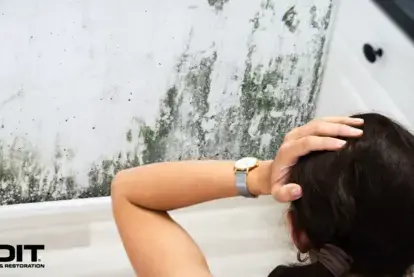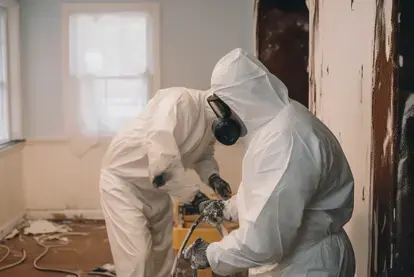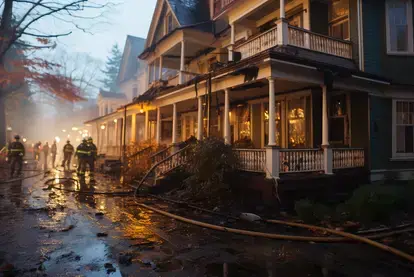
What to Do When Frozen Pipes Become Burst Pipes
Contact COIT for a professional cleaning!
With all the cold snaps large swaths of the nation have been experiencing this winter, burst pipes have become a common nuisance for homeowners and businesses. Water pipes freezing is the leading culprit of burst water pipes that can cause so much costly damage. When temperatures dip below freezing, water inside your pipes can turn into ice and expand. This puts tremendous pressure on your water pipes, which can in turn cause them to crack and burst.
In many cases, a homeowner or business owner may not even realize their water pipes have burst until the ice has thawed and the leaking begins. You may be out for the day, then return home to find pools of water collecting on the floor and flooding from pipes left damaged after a winter freeze.
What Causes Burst Water Pipes
While freezing temperatures are the main cause of burst pipes, other underlying factors can also contribute to pipe cracks and damage. When rust and corrosion build up inside pipes, for instance, the pipe material can degrade and become more vulnerable to bursting. Trees located near your pipes can also send out their roots to invade pipes, leading to cracks and leaks. Significant soil movement caused by construction, temperature changes or plumbing system repairs can damage water pipes, as can high water pressure and serious clogs that make their way deep within the system.
Signs that Your Water Pipes Have Burst
If you suspect that you may be dealing with burst pipes, the first thing to do is to look for signs of water leakage and damage. Puddles will typically be larger and spread wider in the event of a burst pipe versus a leak, so look for pooling water under sinks, near pipe fittings and fixtures, and around toilets, dishwashers, and washing machines.
Another sign to look for is lower than usual water pressure, since cracks in pipes can restrict the flow of water. You may also notice stains on your walls and floors that indicate a burst pipe. If corrosion is the cause of the burst water pipe, you may also see a reddish discoloration or smell a metallic odor in the water.
In some cases, you might be able to hear signs of a burst water pipe in the walls. The sound of constant dripping, for example, could be an indication that a pipe is burst. If you notice your water bill is higher than normal, that may also be linked to a burst water pipe.
Mold and mildew can be another indicator of a burst water pipe. If the pools of water you find have a strong odor, the water leaking from the burst pipe likely has dirt or debris in it and may be contaminated — posing a potential health threat.
Regardless of whether you hear, see or smell something unusual, it’s important to take immediate action as soon as you suspect you may have a burst pipe. It doesn’t take long for a frozen pipe to do serious damage to your home or business. In the presence of standing water, it only takes 24 to 48 hours for mold and mildew to appear* — and once it does, it can lead to or worsen respiratory problems.
Water damage from burst frozen pipes can also cause wood to rot and warp, resulting in costly structural damage to property. Water from burst pipes can additionally wreak havoc on carpets, flooring, drywall, furniture and your personal belongings.
When Water Pipes Burst, Don’t Delay
To minimize the damage as well as the health risk, here are some key steps to take as soon as your realize your pipes have burst.
- Turn off your water supply. Valves are typically located in the basement, crawl space, close to the water heater, or outside near the water meter.
- Turn off your electricity if there are signs of serious leakage, since water may find its way to your electrical sockets or fuse box.
- If you’re dealing with water pipes freezing and bursting, drain your faucets to keep them from refreezing. Flush your toilets a few times, turn off your boiler or water heater, and leave your faucets and taps open to prevent pressure from building up.
- Find the leak if you can. Check the bathroom, kitchen and basement. Look for bulges in the cleaning and floors, and for water spots on the walls. If you do fine a leak, try temporarily plugging it with rags and place a bucket if needed to catch the leaking water and minimize damage to your floors.
- Call your plumber to identify the issue, evaluate the best course of action, and make any needed repairs to your pipes and system.
- Clean excess water with a mop or rags so it’s not sitting around (if there are signs of contamination, wait for a professional to do the clean-up). Move furniture and any other belongings out of the way, open the windows to let in fresh air, and set up fans or dehumidifiers to accelerate the drying process.
- Document any damage caused by the burst pipe by taking pictures of affected items, areas and the spot where the leak started. This will come in handy in dealing with insurance and expediting claims.
- Call a restoration professional as soon as you can. Superficial cleaning with a mop or rag won’t remove all the water that has soaked into hard-to-clean places, and drying water-damaged areas requires specialized equipment.
Leave the Restoration to the Professionals
Calling in a specially trained, certified restoration pro is essential to restoring your property and personal items to their original condition, minimizing further damage, and ensuring your space is decontaminated to protect the health of your family or occupants.
COIT’s experienced, independently certified restoration professionals are ready to respond quickly following burst water pipes and resulting water damage. We’ll help you inspect and assess the damage, salvage and restore personal belongings, prevent mold growth with industrial-grade drying, sanitize and deodorize affected areas, and get your life back normal.
* https://www.fema.gov/pdf/rebuild/recover/fema_mold_brochure_english.pdf



